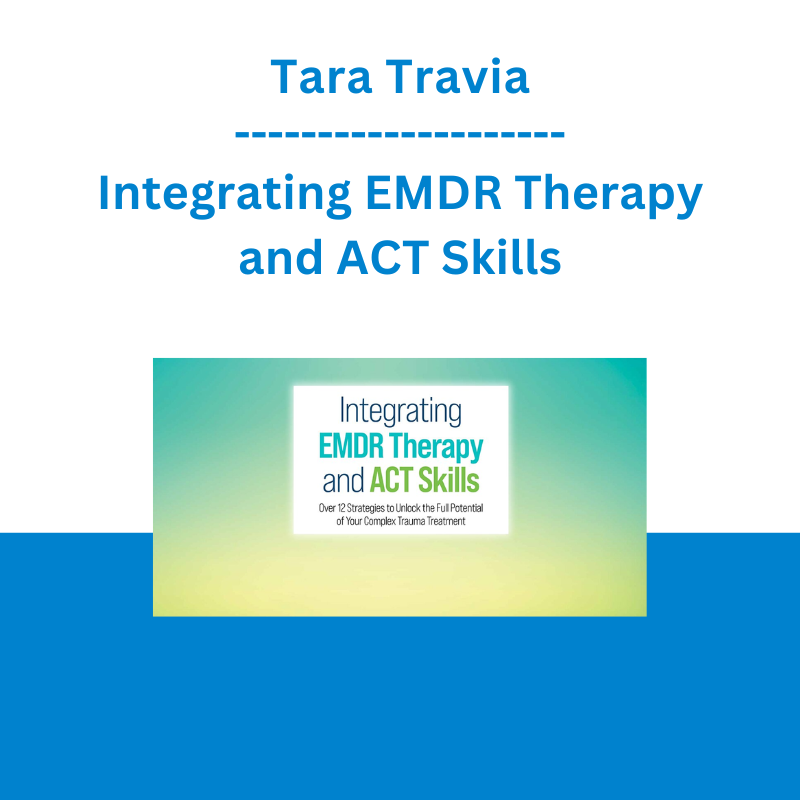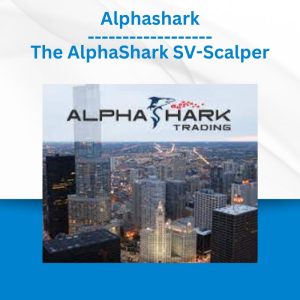*** Proof of Product ***
Exploring the Essential Features of “Tara Travia – Integrating EMDR Therapy and ACT Skills: Over 12 Strategies to Unlock the Full Potential of Your Complex Trauma Treatment”
Speaker: Tara Travia, PhD
Duration: 6 Hours 21 Minutes
Format: Audio and Video
Copyright: Apr 29, 2024
Media Type: Digital Seminar
Description
If you use EMDR therapy with clients, you probably can’t imagine treatment without it.
But many times, our complex clients need additional skills to cope with the process itself so they can fully benefit from their therapeutic journey.
Fortunately, Acceptance and Commitment Therapy (ACT) can provide those skills!
By using ACT skills in your EMDR sessions, you can help even your toughest clients better approach difficult material, remain engaged in the process, re-work coping skills, and reduce the self-judgement that can halt progress.
You’ll watch Certified EMDR therapist Tara Travia, PhD, as she gives you a step-by-step guide to using ACT skills in EMDR therapy – complete with a flexible set of skills, interweaves and resourcing techniques – so you can make trauma resolution gentler and more focused on behavior-change outside of sessions.
When you watch Dr. Travia you’ll discover how you can:
- Enhance your confidence with complex trauma cases
- Develop client histories that seamlessly guide them through all 8 phases
- Harness the power of interweaves to deepen therapeutic impact
- Pave the way for smoother healing by reducing self-judgement and dysregulation
- More easily craft negative and positive cognitions with the client
- And much more!
- Don’t miss this opportunity to unlock the full power of EMDR therapy for your clients and yourself.
Purchase now!
Speaker
Tara Travia, PhD
Dr. Tara Travia, has been working with clients who have experienced complex trauma for over 15 years using ACT and EMDR in a variety of settings. She is certified in EMDR, is an approved consultant and deeply enjoys the supervision of EMDR practitioners.
Trained in several approaches, Dr. Travia has found that EMDR is by far the most well-tolerated and effective modality for the most complex clients. She has found that integrating ACT skills with EMDR is a natural combination which clients report has helped them heal more fully than other treatments they had tried. Dr. Travia earned her PhD in clinical psychology from Kent State University.
Speaker Disclosures:
Financial: Tara Travia maintains a private practice. She receives a speaking honorarium from PESI, Inc. She has no relevant financial relationships with ineligible organizations.
Non-financial: Tara Travia is a member of the EMDR International Association.
Objectives
- Determine how trauma symptoms are managed with EMDR based on the research.
- Integrate EMDR and ACT interventions together to create an integrative treatment plan.
- Evaluate how to apply ACT to trauma treatment to reduce experiential avoidance.
- Analyze the core concepts and components of the psychological flexibility model within Acceptance and Commitment Therapy (ACT).
- Choose ACT strategies to help clients feel grounded in sessions.
- Identify how the concept of event centrality and its reduction connects both EMDR and ACT processes.
Outline
EMDR Basics Review and Trouble Areas
- Dissociation and client disconnection
- Window of tolerance and inability to “resource”
- Hopelessness and disintegrating coping strategies for daily life
- “Unhelpful” narratives about the self and world
- Research, risks, and limitations
- Indications and contraindications
ACT as a Practice and Compatibility with EMDR
- CBT versus ACT
- Experiential avoidance and its pitfalls
- The problem with trying to change/fix feeling and thoughts
- “Distraction” or “fixing” versus mindfulness and acceptance
- Building the clients capacity to be with emotions
- Research, risks, and limitations
- Indications and contraindications
- Where ACT and EMDR may differ
- Compatibility with EMDR theory and the standard protocol
A Quick Guide to Using the ACT Model in Treatment
- The Act model in 6 parts
- Practice ACT techniques in vivo
- Simplify using ACT in sessions to improve resourcing
- Strategies to help clients feel grounded in sessions
- Somatic language and tools
- Increase understanding, commitment, and window of tolerance
Integrative versus “Eclectic” Therapists
- How your theoretical orientation helps you as a clinician
- Why EMDR is not merely a Phase 4 model or a technique
- The art of therapeutic “lenses” – gaining deeper insights into client concerns
- Shaping our treatment plans with an eye toward integration
- ACT techniques to help clients grow towards new value-laden behaviors
Integrate ACT Techniques into EMDR Therapy Phases
- Teach ways to “anchor”
- Value clarification and exploring answers to “why bother?”
- Access the “observing self”
- Clarify “negative” and “positive” cognitions
- Explore our own narratives about EMDR phases
- Navigate clients who want to rush the process and avoid with daily crises
- Defusion, Acceptance, and Compassionate Self/Body Awareness
- Prepare for new targets and the future
- ACT for self-care as a trauma therapist
- Worksheets and forms
Target Audience
- Counselors
- Social Workers
- Psychiatrists
- Psychologists
- Addiction Counselors
- Marriage and Family Therapists
- Therapists
- Physicians
- Nurses
- Other professionals who work within the mental health fields
Please see the full list of alternative group-buy courses available here: https://lunacourse.com/shop/










 Trade Like Mike - The TLM Playbook 2022
Trade Like Mike - The TLM Playbook 2022  George Fontanills & Tom Gentile - Optionetics 6 DVD Series Home Study Course (Digital Download)
George Fontanills & Tom Gentile - Optionetics 6 DVD Series Home Study Course (Digital Download)